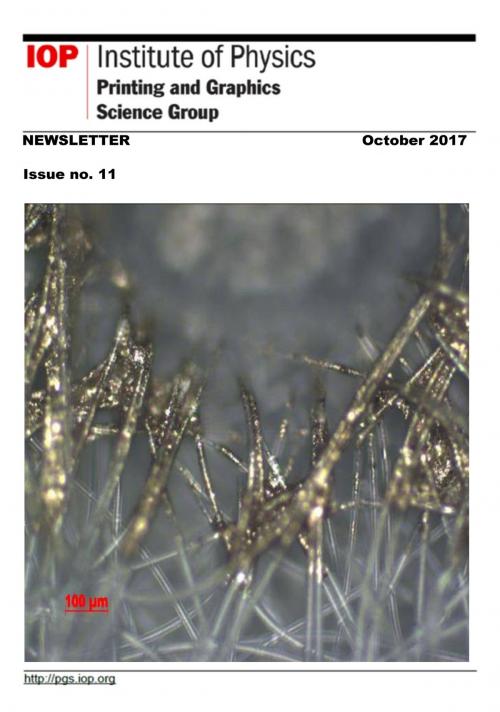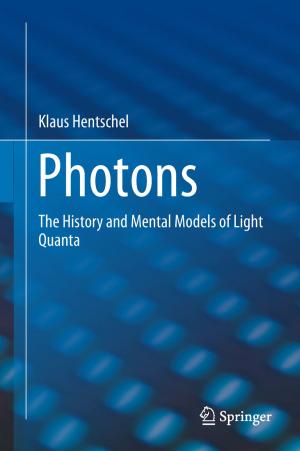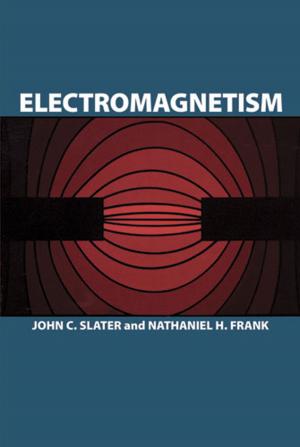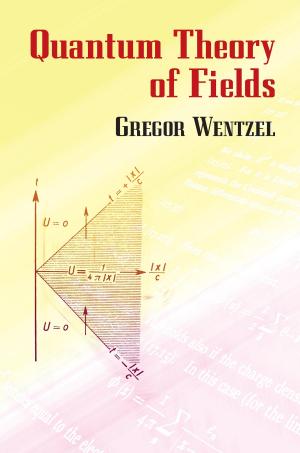Issue #11 Printing and Graphics Science Group Newsletter
Nonfiction, Science & Nature, Science, Other Sciences, Applied Sciences, Physics, General Physics| Author: | Roy Gray | ISBN: | 9781370368860 |
| Publisher: | Roy Gray | Publication: | October 31, 2017 |
| Imprint: | Smashwords Edition | Language: | English |
| Author: | Roy Gray |
| ISBN: | 9781370368860 |
| Publisher: | Roy Gray |
| Publication: | October 31, 2017 |
| Imprint: | Smashwords Edition |
| Language: | English |
Exciting new developments are taking place in graphic arts technology and printing applications. This issue includes a section on wearable electronics devices and a report on Security Printing at the Printing for Fabrication conference 2016.
The digital revolution initiated a whole range of new ways of reproducing and displaying images and information: physics is involved in forming and measuring the image and how it is perceived. Inkjet and other printing and deposition processes are being used in many novel applications such as visual displays, flexible electronics, smart packaging, lighting and photovoltaics based on organic and polymer electro-optic materials. Physicists are actively involved in developing the processes, designing and characterising the products, and developing the new materials.
The UK has a world-leading position in these technologies, and the Printing and Graphics Science Group promotes the application of physics in these fields. We will bring together scientists working in industry, academy and elsewhere, and develop links with other active professional societies, such as the Institute of Materials, Minerals and Mining, Institute of Paper, Printing and Publishing, Royal Society of Chemistry, Royal Photographic Society and the Colour Group. Research in our areas is multi-disciplinary, often carried out in departments not called “physics”, by scientists whose original discipline is often not physics. Our activities include this wider community, wherever physics is being developed and brought to bear.
This newsletter, #11, was edited by Roy Gray and formatted as an Ebook by Roy Gray for The Printing and Graphics Science (PGS) Group of The Institute of Physics (IOP). Five earlier editions #10, #9, #8, #7 & #6, were published as E books.
The PGS Group is affiliated to the Applied Physics and Technology Division of the Institute of Physics. This ensures strong links with IOP Groups in related subject areas, such as Polymer Physics, Materials and Characterisation, Engineering Physics, Tribology, and Ion and Plasma Surface Interactions. We participate in the Division Conference, as well as maximising the opportunities for joint meetings with other Groups. The PGS Group is a relaunch and renaming of the Printing, Packaging and Papermaking (PPP) Group, which was formed in 1985 to promote physics in these subject areas. We maintain an interest in the manufacture and properties of paper as a key substrate for printing, and in the physics of packaging.
Our objectives are:
To promote the application of physics in graphics arts technology, printing, packaging and papermaking
To promote the development of innovative printing in new markets such as displays, lighting and printed electronics
To promote a recognition of the importance of physics in those industries, and to promote physics in these industries as a career choice to graduates
To act as a forum for communication within the scientific community in these industries
Our activities include:
An annual one-day group meeting on a current application of physics to technology.
Technical meetings and visits to companies, laboratories and other venues
An annual Student Conference to enable postgraduate researchers to present their work and network
Encouraging student participation by awarding two presentation prizes and making travel funds available.
A newsletter published at least annually
A website covering the Group’s activities is on the Institute of Physics Website Activities/Groups pages
Exciting new developments are taking place in graphic arts technology and printing applications. This issue includes a section on wearable electronics devices and a report on Security Printing at the Printing for Fabrication conference 2016.
The digital revolution initiated a whole range of new ways of reproducing and displaying images and information: physics is involved in forming and measuring the image and how it is perceived. Inkjet and other printing and deposition processes are being used in many novel applications such as visual displays, flexible electronics, smart packaging, lighting and photovoltaics based on organic and polymer electro-optic materials. Physicists are actively involved in developing the processes, designing and characterising the products, and developing the new materials.
The UK has a world-leading position in these technologies, and the Printing and Graphics Science Group promotes the application of physics in these fields. We will bring together scientists working in industry, academy and elsewhere, and develop links with other active professional societies, such as the Institute of Materials, Minerals and Mining, Institute of Paper, Printing and Publishing, Royal Society of Chemistry, Royal Photographic Society and the Colour Group. Research in our areas is multi-disciplinary, often carried out in departments not called “physics”, by scientists whose original discipline is often not physics. Our activities include this wider community, wherever physics is being developed and brought to bear.
This newsletter, #11, was edited by Roy Gray and formatted as an Ebook by Roy Gray for The Printing and Graphics Science (PGS) Group of The Institute of Physics (IOP). Five earlier editions #10, #9, #8, #7 & #6, were published as E books.
The PGS Group is affiliated to the Applied Physics and Technology Division of the Institute of Physics. This ensures strong links with IOP Groups in related subject areas, such as Polymer Physics, Materials and Characterisation, Engineering Physics, Tribology, and Ion and Plasma Surface Interactions. We participate in the Division Conference, as well as maximising the opportunities for joint meetings with other Groups. The PGS Group is a relaunch and renaming of the Printing, Packaging and Papermaking (PPP) Group, which was formed in 1985 to promote physics in these subject areas. We maintain an interest in the manufacture and properties of paper as a key substrate for printing, and in the physics of packaging.
Our objectives are:
To promote the application of physics in graphics arts technology, printing, packaging and papermaking
To promote the development of innovative printing in new markets such as displays, lighting and printed electronics
To promote a recognition of the importance of physics in those industries, and to promote physics in these industries as a career choice to graduates
To act as a forum for communication within the scientific community in these industries
Our activities include:
An annual one-day group meeting on a current application of physics to technology.
Technical meetings and visits to companies, laboratories and other venues
An annual Student Conference to enable postgraduate researchers to present their work and network
Encouraging student participation by awarding two presentation prizes and making travel funds available.
A newsletter published at least annually
A website covering the Group’s activities is on the Institute of Physics Website Activities/Groups pages















